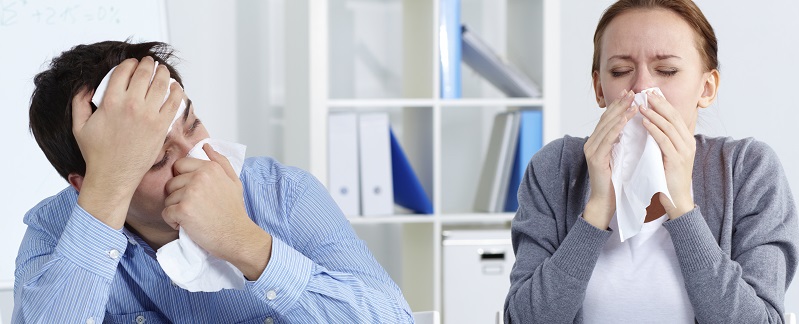Imagine you’re sitting in a crowded room. You glance around at the people sitting next to you, when you realize you’re all sitting in a room with no windows. You take a deep breath that quickly turns into a yawn. After a few minutes, you notice your face feels flushed, and you suddenly wish you could take a nap. The Indoor Air Quality of the home or office may be the reason why, see how it effects us everyday and how we don’t realize it.

While you might not fall asleep, you probably are feeling some effects of poor air quality. The air we breathe indoors often has a negative effect on our ability to pay attention and our overall health. In fact, a range of health and environmental experts note that poor indoor air quality can make us sleepier, sicker, and even dumber. Considering that the average person spends around 90% of their time indoors, we clearly need a better understanding of what we’re actually breathing.
What is Indoor Air Quality?
According to the Occupational Safety & Health Administration, indoor air quality describes “how inside air can affect a person’s health, comfort, and ability to work.” Many of us probably take for granted that our homes, schools, workplaces, and other buildings are properly ventilated, and the air we’re breathing isn’t hurting us. The reality is that indoor air quality presents us with some significant health risks, including asthma, impaired judgment, and even cancer.
The Environmental Protection Agency ranks indoor air pollution among the top five environmental health risks in the United States. This leads us to two key questions. What are these risks and where do they come from?
There are two primary sources that contribute to poor indoor air quality – air pollution and improper ventilation. When it comes to air pollution, what we’re usually talking about are the harmful particles that are introduced into the air through smoke, dust, pollen, gases, and other chemicals. On the other hand, improper ventilation generally refers to the features of a room, home, or other building that limit good air circulation.

The term “pollution” tends to conjure images of giant smoke stacks with clouds of smoke billowing from the top, but some of the most common pollutants we encounter are in our own homes, schools, and workplaces. Indoor air pollution usually comes from sources like mold and pollen, tobacco smoke, household cleaning products, and building materials like asbestos. In the short term, common symptoms of exposure to these pollutants include itchy eyes, runny nose, and dizziness or fatigue at first, followed by other allergic reactions and asthma shortly after. When we look at the long term, the health risks become more severe, including respiratory diseases, heart disease, and in some cases cancer.
Most people must deal with indoor air pollution because buildings or homes either have not been properly maintained or properly upgraded. For example, poor maintenance of roofs and windows can prompt mold growth and water problems, just as cracks in a home’s foundation can lead to problems with radon. Also, as more and more buildings are designed and upgraded to be more energy efficient, air pollutants are sometimes trapped inside. Energy-efficient homes and buildings can be a tradeoff for those that allow more fresh air to circulate and structures to breathe. This means we must consider not only air pollution, but also improper ventilation.

Many of us might wrongfully assume that the air we breathe indoors is fairly similar to the air we breathe outdoors. In some cases, however, indoor air quality is far worse than outdoor air. For example, office buildings in urban areas risk higher carbon monoxide rates, because their air intake also takes in fumes from car emissions. The differences when we walk through the door are sometimes so subtle, it’s no surprise we hardly notice. But improper ventilation can present some serious health concerns, especially when it comes to air circulation and carbon dioxide concentrations.
As far back as 1970, researchers and building designers have been tracking sick building syndrome, which often results from poor indoor air quality, circulation, and ventilation. Symptoms are tough to pin down, but they include everything from itchy and watery eyes, nose, and throat to headaches, nausea, dizziness, problems concentrating, and cold and flu-like symptoms. Sick building syndrome remains a bit controversial, in that it’s difficult to track down the specific causes and symptoms that can be attributed to it. At the same time, researchers have begun to pinpoint the sources and symptoms of other ventilation problems, like high concentrations of carbon dioxide (CO2).
Think back to the crowded room scenario at the beginning of the article. Your flushed face and fatigue were most likely the result of improper ventilation and high concentrations of CO2. Gases like CO2 are measured in parts per million PPM. The typical measure of CO2 for outdoor air is 380 PPM, although some reports note that number is starting to climb toward 500. When we move indoors, that number is often much closer to 1000 PMM and can sometimes exceed 3000 PPM. The following table helps make sense of the important numbers on CO2:
What Should You Do About Indoor Air Quality?
Despite the increasing risks associated with both indoor air pollution and improper ventilation, consumers have many options when it comes to managing the effects of poor indoor air quality. The first and perhaps most obvious option is to develop a plan to improve the ventilation within your home. Homeowners should ensure that their heating and air conditioning system is properly maintained and that rooms are appropriately ventilated. Building managers and facilities operators should also measure particle levels and CO2 concentrations in workplaces and other spaces where people gather frequently, to keep those levels within an acceptable range.
Additionally, homeowners and building managers can also test for both carbon monoxide and carbon dioxide levels. While carbon monoxide is often treated as the bigger danger, which for the most part it is, CO2 also poses its fair share of health risks. Consumers can Monitor both CO and CO2 levels as part of their strategy for improving indoor air.
Building designers and architects also have a part to play in the future of ensuring good indoor air quality. Right now, energy efficiency and air quality are sometimes seen as a trade-off. A home can either be “tight” and keep the heat/AC trapped inside, or it can allow more fresh air to circulate while letting energy escape. Green building techniques allow for innovation when it comes to perceived trade-offs like this. There is room for develop new technologies and techniques for managing energy while improving indoor air quality, and designers and contractors would be well served to engage in that conversation.

Finally, if you’re not able to upgrade your HVAC unit or improve your indoor ventilation system, you still have some options for reducing your health risks. The EPA maintains that air filters and other air cleaners serve as an option for helping to remove harmful materials in the air. Additionally, new research has provided some early support for the idea that multivitamins can help reduce the negative health effects associated with poor indoor air quality. Your best option is to remove the pollutants from the air before you breathe it, but you can also help manage the negative health effects should you experience them.
The next time you’re sitting in that crowded room, remember not to take for granted the quality of the air you’re breathing. Bodies release a lot of CO2 when we breathe, which can make the rest of us tired and unfocused when we’re not getting enough oxygen. And you never know what sorts of pollutants are lurking in the air ducts. With some careful monitoring and a few simple solutions, however, most of us should be able to breathe a bit more easily.
Be sure to “Follow Us” to keep current with everything in the AirMaxx World, and “Share” this blog and future blogs with all your friends and Family. Till Next time, thank you for taking the time and reading our blog!



